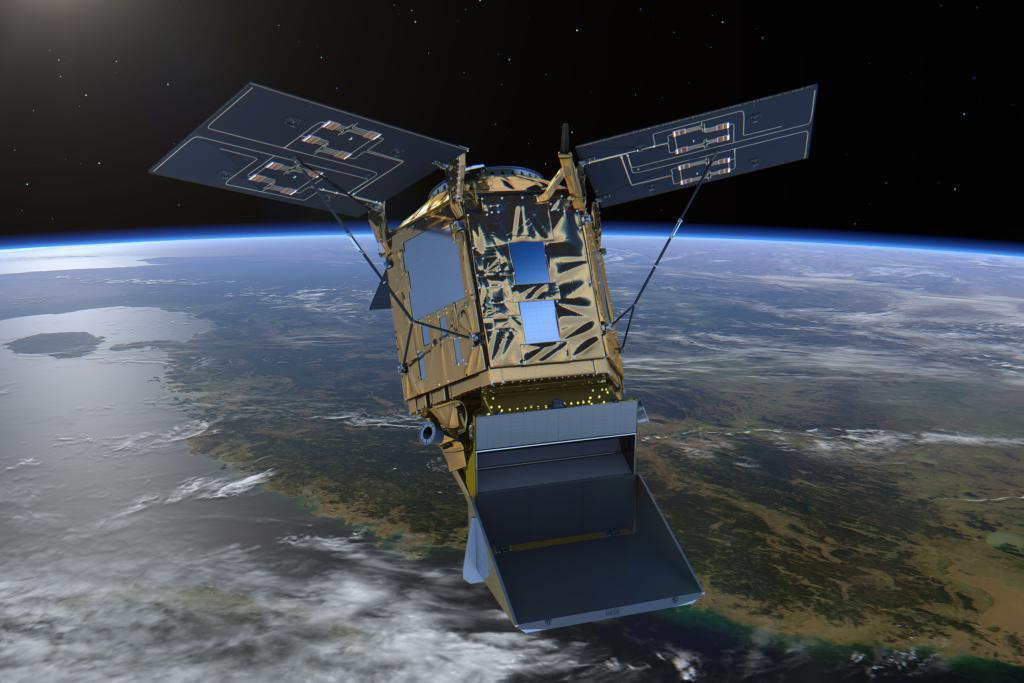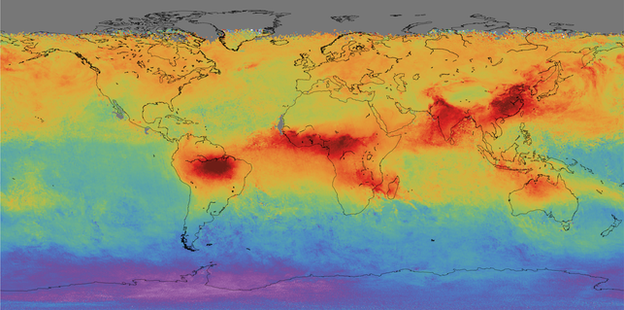 On October 13, a satellite was launched from Russia carrying a very special cargo -- a device that can measure our Earth's air quality.
On October 13, a satellite was launched from Russia carrying a very special cargo -- a device that can measure our Earth's air quality.
Known as Sentinel-5P, it was jointly created by Great Britain and the Netherlands, as part of the European Union's Copernicus program.
The goal of the Copernicus program is to send satellites that would help us better understand our Earth's atmosphere, climate, land geography, marine environments, and more, and can be used to guide researchers.
The first satellite was released in 2014. Sentinel-5P, the sixth satellite in the program, was designed to map out our Earth's air quality and climate.
In its short time in space, it has already sent researchers valuable information and has even captured smoke plumes from Mt Agung in Bali.
Measuring Air Quality
The Sentinel-5P satellite carries a state-of-the-art spectrometer known as Tropomi. Tropomi measures air quality by analyzing sunlight that is reflected back from our Earth's surface and atmosphere.
So, how does a spectrometer work? Just like a prism that you might be familiar with, a spectrometer breaks up light into parts of the light spectrum.
Light entering the spectrometer is reflected onto a grating, which splits it into different wavelengths. A photodetector converts each wavelength into a tiny electric current which is then captured on the computer screen as an image.
Sentinel-5P's spectrometer can measure light from ultraviolet to shortwave infrared part of the spectrum -- which is wider than any previous spectrometers. Each of the gases in the atmosphere reflects back a unique frequency of light, which can be considered it's signature.
An analysis of the captured light reveals the existence of gases like carbon monoxide, ozone, formaldehyde, sulfur dioxide, nitrogen dioxide, and methane, all of which are harmful pollutants in our atmosphere.
How Sentinel-5P Can Help
 In 2012, the World Health Organization reported that over 3.7 million people die prematurely each year due to air pollution.
In 2012, the World Health Organization reported that over 3.7 million people die prematurely each year due to air pollution.
These pollutants can cause problems with breathing, blood flow, and skin. Sulfur dioxide, in particular, is a major component of acid rain. Nitrogen dioxide and ozone in the lower atmosphere create smog that we find floating around urban areas.
Sentinel-5P will be monitoring cities and neighborhoods on a daily basis and at different times of the day. This data will allow government officials to monitor if industries are indeed self-reporting the correct pollution information, and help policymakers in improving air quality.
In images sent so far, while the Northern hemisphere shows carbon monoxide due to industrialization, red hotspots can be seen in the Southern Hemisphere from the burning of forests and industrial activity.
Nitrogen dioxide appears in areas with factories, vehicles, or from the burning of fossil fuels for energy. In addition, the images show how air pollution travels from its source and can also display UV radiation, holes in the ozone layer, as well as volcanic ash in the atmosphere!
Researchers running the Copernicus program plan to launch around 20 more satellites by 2030. Thanks to Sentinel-5P, we can expect to see how people around the world contribute to global climate change and hopefully find a solution to prevent the harmful changes.
Courtesy ESA, BBC, eos.org, Sciencing, Wikipedia







